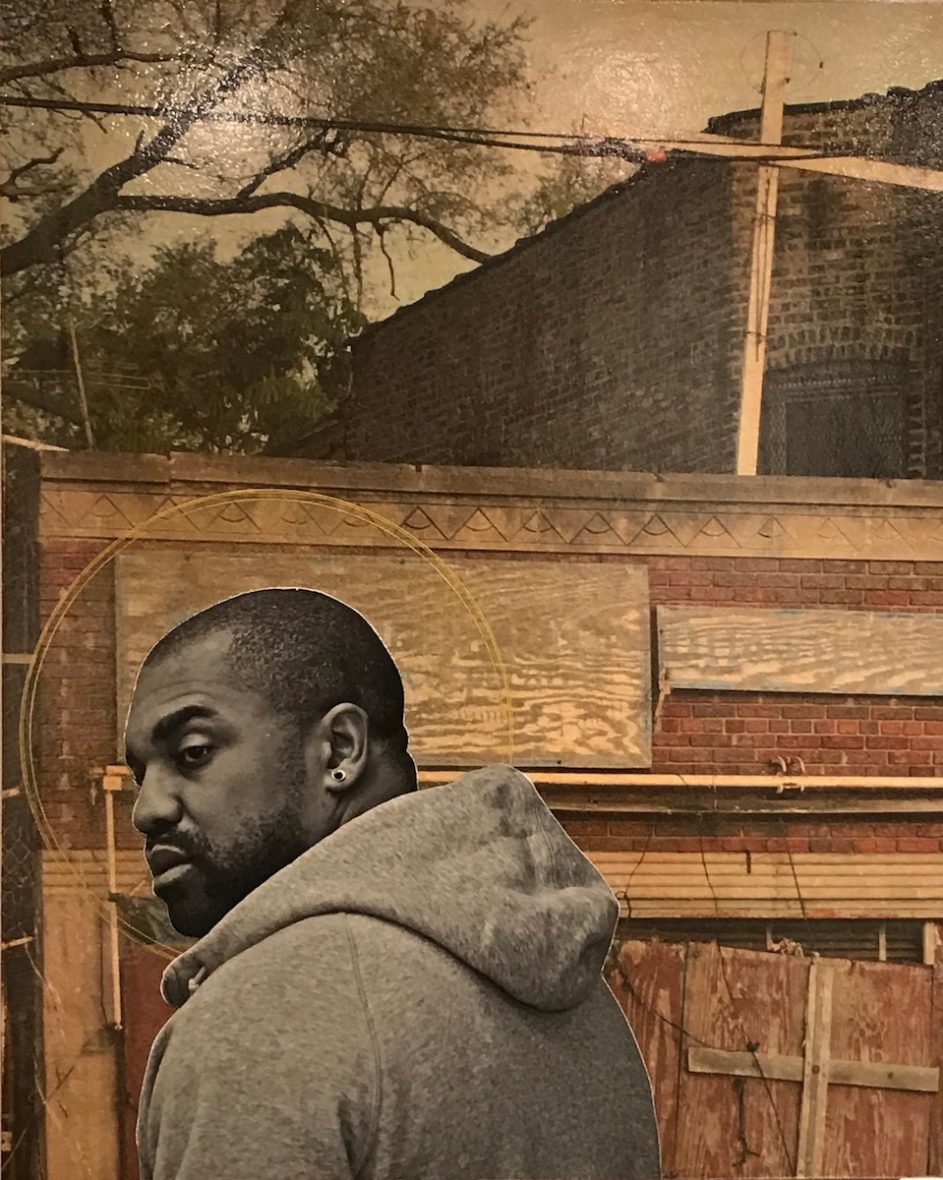A small but fascinating retrospective of artist and printmaker Marc Z. DeBose is currently showing at the gallery at the Frieson Black Cultural Center at UT. DeBose died in April 2018 from a ruptured aorta. He was 46.
DeBose earned his master’s in fine arts (MFA) in 2002 at UT, one of the top printmaking programs in the country.
DeBose came to art from family tradition. His father, Frank DeBose, is professor emeritus in visual communication design at the School of the Art Institute of Chicago. The younger DeBose earned his bachelor’s in fine arts there in 1996.

Generations: Served, Grandfather and Uncle, mixed media print on paper
To a large extent, art training and education have gone the way of jazz. Young people’s growth in the field channels young practitioners into academic education, instead of on-the-job apprenticeships.
Art can also be a spiraling profession. Many young artists getting graduate degrees find jobs in other art schools where they train new generations of artists whose careers, in turn, take the same path.
DeBose, on the other hand, chose to follow the career paths of his uncle and grandfather. He became a Chicago police officer, setting up his art studio on the side. There were also religious influences of Catholic and Pentecostal roots in his family.
DeBose’s show at the Frieson are responses to both his family’s public service and religious backgrounds.
His print piece titled “Generations: Served, Grandfather and Uncle,” acknowledging his family members Chicago police service, is surrounded by the kind of frame found in 14th century pieces, such as Giotto’s 1335 Bologna polyptych altar piece.

Giotto, Bologna polyptych altar piece, 1335 paint and gold leaf on wood panel and frame
Its setting, as well as the gold color, simultaneously declares police work as a sacred responsibility.
This view appears again in “Self-portrait,” with the double, circular lines surrounding DeBose’s head suggesting a nimbus, a halo that appears around the heads of saints and other sacred figures in Medieval and Renaissance ecclesiastic art.
Two “cross” forms, in both the upper and lower right, as well as one scratched into the photograph above DeBose’s head, emphasize the connection to early Renaissance religious art, as does the image of himself in profile.
Medieval and Renaissance artists had not yet mastered painting figures, especially faces in full-face, three-dimensional perspective. In early paintings, the figures are more or less flat outline profile drawings.
Further, before the full development of perspective drawing, which created the skill of drawing and painting realistic buildings and landscapes, the backgrounds of religious paintings were most often limited to gold-leaf covered panels, usually made of wood.
DeBose has followed this tradition by presenting several of the pieces in the show as printed images fixed to a gold-painted plywood panel. In especially the pieces which are portraits of policemen on duty, it’s a comment intended to capture what DeBose saw as a sacred profession of carrying out the responsibilities of the commonplace.
The show runs through Feb. 28. It is free to the public. The Frieson Black Cultural Center is open daily at 1800 Melrose Avenue.
A 30-minute, free parking lot is located adjacent to the center on the west side.

